…have driven on a rural road and passed small families of unsupervised cattle strolling together on the shoulder? Until March 2016 I hadn’t driven by unsupervised cattle walking on a paved road anywhere, ever. Not in Switzerland. rural France, Vermont, upper New York State…nowhere on earth until I visited rural Vietnam.
Daily
Will Smith Is Rich Enough To Do Whatever
The notion of seasoned people in their 40s and 50s undergoing identity crises and indulging in impulsive, unconventional behavior began with Sam Peckinpah‘s The Wild Bunch (’69), the main protagonists of which were all long-of-tooth. In the cultural blink of an eyelash, wildness was suddenly an older-person thing. The spiritual-sexual side of this syndrome was explored by Tom Wolfe in the early ’70s, aka “the Me Decade.” A minor signifier was Middle Age Crazy (’80), a totally disappeared dramedy with Bruce Dern and Ann-Margret.
But then teens have always been wild, and 20somethings have always lived lives of Fellini Satyricon. Hell, the only people living modest, carefully regimented lives these days are expectant parents (like Jett and Cait) — otherwise it’s hoo-hah time from 12 through 75.
Now comes a qualifier by way of Will Smith and Denzel Washington. Middle-age crazy is composed of two phases — the “funky 40s” and the “fuck-it 50s.”

Will Smith to GQ‘s Wesley Lowery: “Throughout the years, I would always call Denzel. He’s a real sage. I was probably 48 or something like that and I called Denzel. He said, ‘Listen. You’ve got to think of it as the funky 40s. Everybody’s 40s are funky. But just wait till you hit the fuck-it 50s.’
“And that’s exactly what happened,” Smith recalls. “[Soon after my life] just became the fuck-it 50s, and I gave myself the freedom to do whatever I wanted to do.”
Many of those things are detailed in “Will” (11.9.21), Smith’s semi-“autobiography” that was co-authored by Mark Manson (author of “Everything is Fucked: A Book About Hope” and “The Subtle Art of Not Giving a Fuck: A Counterintuitive Approach to Living a Good Life”).
Smith: “I totally opened myself up to what, I think, was a fresh sampling of the fruits of the human experience.”
Lowery: “And so Smith set out on a journey to find himself, and find happiness. He rented a house in Utah and sat in solitude for 14 days. He traveled to Peru for more than a dozen rituals [involving the sipping of a plant-based psychedelic called ayahuasca], even though he’d never even smoked weed and barely drank. (‘This was my first tiny taste of freedom,’ Smith writes of his first experience. ‘In my fifty plus years on this planet, this is the unparalleled greatest feeling I’ve ever had.’) He opened a stand-up show for Dave Chappelle. He began traveling without security for the first time, showing up in foreign countries and working his way through the airport crowds unaccompanied.
The fact that Smith defines “exotic high” as flying commercial and working his way through airport crowds without a pair of security goons…this in itself tells you he’s an odd duck. What’s next…hitting a Rite-Aid at 11 pm all by his lonesome and buying some paper towels and maybe an ice cream cone?
Don’t Ask
Friendo: Have you heard anything about whether the new Bond is good?
HE: “Good”? As in the opposite of “bad”? Do people even think of Bond films in black or white terms? Bond films deliver safety, comfort and corporate assurance. They’ve been machine-tooled products since at least the Brosnan era.
Carey Fukunaga isn’t going to do anything wild or eccentric with No Time To Die. He’s just going to do the thing that he was hired to do.
I have two favorite phases — the first two Bonds (the wonderfully bare-bones Dr. No and From Russia With Love) and the goofy, half-crazy, raised-eyebrow Bonds directed by Lewis Gilbert (The Spy Who Loved Me, Moonraker). Many Bond films have shown a certain flair or pizazz or irreverence, but the corporate assurance factor has been locked in since the ’80s.
Okay, not For Your Eyes Only (’82) — that was a stab at returning to a stripped-down, less-is-more approach.

Seven Paragraph Bulls-Eye
The most concise, honest and dead-on assessment of Paul Thomas Anderson‘s Phantom Thread ever written. Because all the effete, high-falutin’, dingle-dangle, ostrich-feather bullshit that you get from so many critics has been boiled out of it, and all that’s left is the truth.

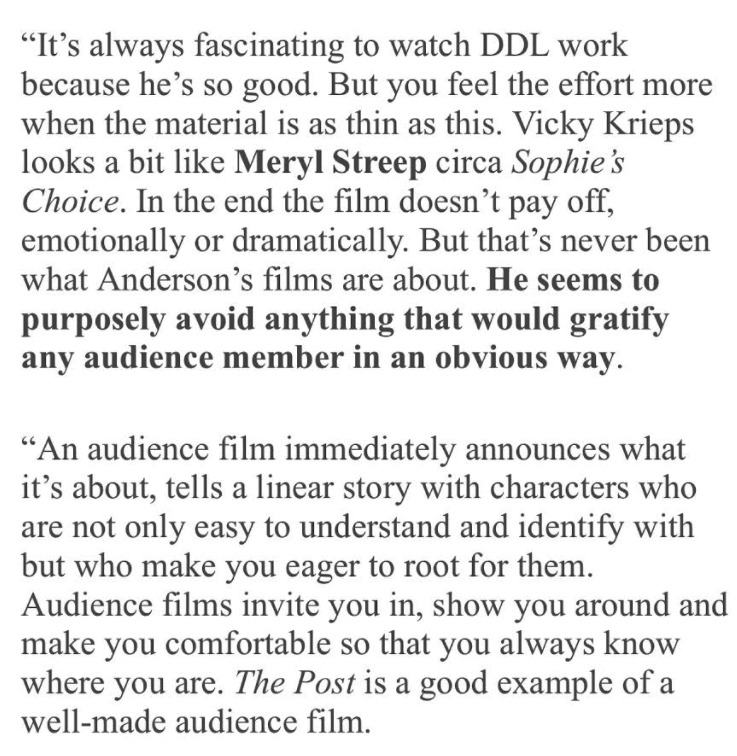

My own review, “Paul Thomas Anderson’s Howl,” posted on 12.7.17.
Same Hustlers & Chess Players
In 1975 a merger of Creative Management Associates (the agency that Manhattan-based talent agent Sidney Pollack worked for in Tootsie) and International Famous Agency formed ICM, a talent and literary agency. To many of us Jeff Berg was the face of ICM for many years. In 2012, the agency completed a management buyout and formed a partnership with a new name, ICM Partners. Now it’s been eaten by CAA, and I honestly don’t care all that much. Okay, somewhat. It’s an “historic” event if you’re Matt Belloni or Richard Rushfield or Kim Masters, but average folks are shrugging their shoulders nationwide.

Nightmare on Stone Canyon Road
Tatiana wanted to go out for dessert and coffee, and the Bel Air Hotel is one of her favorite haunts. We arrived sometime around 8 pm, and right away it felt wrong. As we walked over the stone bridge there was a huge outdoor dinner party (90 or 100 guests) happening to our left with sparkly white lights, and a live four-piece band playing obnoxious Middle-Eastern or Turkish music. It was awful, and you could just sense that the general clientele weren’t casual X-factor types like myself (I was wearing jeans, my brown leather motorcycle jacket and black-and-white saddle shoes) but Kardashian wannabes with something to prove.


The low-lit bar area has some nice mini-sofa seating, but the Wolfgang Puck dessert menu…I don’t know why I’m complaining given the locale and pretensions, but something in me recoiled when I saw they were charging $18 for a single chocolate chip cookie and a gluten-free snickerdoodle. I was muttering to myself, “I will not order an $18 cookie and this is not my scene…I don’t need to do this. I’ve hung loose in some of the coolest, most casual-vibe cafes and bistros in the world…Paris, Rome, London, Hanoi, Berlin, Belize, Savannah, San Francisco, Cannes, Munich, Prague and lower Manhattan…and the Bel Air Hotel just isn’t cool…everyone is trying too hard and the vibe feels like that of an overpriced hotel in Dubai. And that godawful music from the dinner party wouldn’t quit.
Hell is other people, particularly those wearing black designer sweat suits and white designer-label sneakers.
A couple of nights ago I was chatting with a New York journalist friend at Enzo’s Pizzeria in Westwiood, and it was 15 times cooler and more enjoyable because the place has character and personality and nobody gave a shit.
Sara and “The Hustler”
In the comment thread about yesterday’s Hustler post (“Pay The Man Again, Fats“), “Bentrane” wrote that he re-watched Robert Rossen‘s 1961 classic just last week, and that he couldn’t think of a single thing wrong with it. “One of the greatest films of the ’60s,” he said, “and a terrific morality tale about the things people will do for money, power and fame, and the people they step on along the way.”
HE to Bentrane: “I’ll tell you what’s wrong with it. Piper Laurie’s Sara is what’s wrong with it.
“In Louisville Eddie angrily tells boozy, delicate Sara (‘We have a contract with depravity’) to stop bugging him and just let him play Murray Hamilton’s Findlay, the mint julep rich guy. Playing Findlay for big dough is the WHOLE REASON she, Eddie and Bert have visited Louisville in the first place (and on Bert’s dime). Are they in Louisville to murder someone or rob a bank or sell drugs to school kids? No, and yet Sara says ‘don’t do it, Eddie…you’re better than this.’
“Then, feeling deflated and rejected, Sara somehow allows Bert (George C. Scott) to seduce her, and then commits suicide. She’s so depressed about Eddie having told her to butt out and then having had bizarre drunken sex with Scott (and WHY would she do that?) (and why would Bert do that to a guy who will make a lot of money for him if he keeps him sweet?)…Sara is so despairing that she slits her wrists? Is she eight years old? Has she escaped from a mental institution?
“Sara knows Eddie is a gifted pool player (‘Some men never get to feel that way about anything’) and has no other marketable skill, and she doesn’t want him to win big money doing the one thing that he’s great at because she despises Bert and his chilly, flinty, cut-and-dried manner? He’s not a warm or kind fellow, obviously, but so what? The world is full of flinty guys with gimlet eyes. Sara should’ve stayed in New York and spared herself the angst and heartbreak and confusion.
“The whole Sara thing is more than a little crazy.”
“Cinefan35” responds: “Well, I think the film makes it clear that Sara is psychologically unbalanced but, with Eddie, she sincerely believes (not wrongly) that he is too talented to be a small-time pool hustler for the rest of his life and should aspire to be the next great pool player (i.e., the next Fats).
“And I would also say that she is proven quite right by the end of the film, both with Eddie getting his hands broken while attempting a small-time pool hustle, and with him soundly drubbing Fats in pool repeatedly at the end of the film after his hand has healed.”
“Childerolandusa“: “I think it’s more the obsession with money and winning at all costs that Sara is upset with, more than anything else. Considering how Eddie dumps on Charlie in Act Two, Charlie’s got good reason to be upset about that also.”
HE to “Childerolandusa“: “Myron McCormick‘s Charlie is fundamentally intimidated by the big time. He’s fine with Eddie hustling guys for relatively modest amounts of cash in small towns, but he doesn’t like the big-city realm of Minnesota Fats and Bert Gordon. He’s getting old, Charlie admits. He’s starting to think about maybe owning a small regional pool parlor with a little handbook on the side. He and Eddie are on fundamentally different trajectories. Charlie’s on the way down, and Eddie, who’s more about the transcendent art of pool than the money, wants to see how high he can go. Life works that way at times. Often, in fact.”
I Say Again
As noted a few days ago, the trailer for Paul Thomas Anderson‘s Licorice Pizza (UA Releasing, 11.26) indicates that it’s mainly a romantic relationship story about age-disparate characters played by Cooper (son of Phillip Seymour) Hoffman and rock musician Alana Haim.
Cooper’s character is an aspiring actor named Gary Valentine; Haim is apparently playing a late-teens or 20something woman named Alana Kane. We see them go through initial attraction, flirtation, awkward sexual stuff, warmth, misunderstandings, getting back together, etc.
May I ask something? Hoffman and Haim play younger-older — there’s a line in which she says “I think it’s weird that I hang out with Gary and his 15 year-old friends all the time.” In actuality Hoffman is 18 (17 when the film was shot) and Haim is 29 — 11 years apart. That’s a significant gulf when you’re young.
Imagine if Licorice Pizza was about an older-looking dude (and played by a 29 year-old) falling in love with a 15 year-old girl who’s played by an 18 year-old actress. If so, the reaction could be in the realm of Dear Evan Hansen. People might say “so it’s about a cradle robber…a guy who’s unable to grow up and is hiding in the cave of a youthful romance with a girl who’s too young for him?”
But because #MeToo has given women more agency and independence, it’s totally cool for a 29 year-old to be cast as a somewhat older woman who falls into a relationship with a kid who’s wet behind the ears. Yes, only a nervy director like PTA would even go there, but be honest — Licorice Pizza couldn’t happen with the sex roles reversed.
9.20.21: It seems to me that if you’re a major-league director making a supposedly important film about a couple of love-struck kids (even though the off-screen Haim is pushing 30), you can go with one unknown as long as you pair him/her with a skilled name-brand actor, but you can’t have two unknowns carrying the film because no one will care all that much.
I mean, movies deal in familiar faces and personalities for a reason…right?
There are basic rules about young person relationship movies. Rule #1 is that at least one of the kids should be a half-familiar face, which helps with the comfort factor. Rule #2 is that the kids have to be at least somewhat attractive, not just to each other but to the audience. I’m sorry but ginger-haired Cooper Hoffman looks nerdy and freckly. I can’t put myself in his shoes. I really can’t. Haim isn’t anyone’s idea of a knockout either. The idea seems to be “the odd couple.”
Yes, David Bowie‘s “Life on Mars” helps to some extent.
I might give a damn or even care a great deal about these two when I start watching the actual film, but my first honest reaction was “the movie rests on their shoulders?”
The film has been described as a ‘70s San Fernando Valley thing, focusing on the TV industry with a partial focus on Bradley Cooper‘s Jon Peters, L.A. City Council member Joel Wachs (Benny Safdie), a film director (Tom Waits) and Sean Penn as a smiling, big-personality guy in a slick gray business suit.
There’s a snippet between Hoffman’s character and and Cooper / Peters in which Peters mentions his “girlfriend” Barbra Streisand, followed by a back and forth about how to pronounce the second syllable of her last name. StreiSAND is the correct pronunciation.
Again: Why exactly would Peters, famously paired with a world-famous actress and with ambitions to produce and become a hot shot…why would Peters smash some car windows with a golf putter, and then shout and celebrate this aggression? Guess I’ll find out.
Build His Gallows High
It’s starting to look like Brian Laundrie, suspected of having murdered girlfriend Gabby Petito somewhere in Wyoming during an August road trip, may be “sleeping with the fishes.” so to speak. Perhaps he’s been eaten by a Florida everglades crocodile or alligator. The guilt-ridden Laundrie may have spotten a gator in a river, waded into the water and allowed himself to be sacrificially torn apart and consumed. Or maybe he just drowned.
Or maybe he’s lamming it. He could be somewhere in Mexico or Central America. Nobody knows anything.
NY Post, 9.27.21:
“New dispatch audio shows that the Utah police who pulled over Gabby Petito and Brian Laundrie in August were told that the now-missing boyfriend was the alleged aggressor.
“RP (reporting party) states seeing a male hit a female, domestic,” the dispatcher is heard saying on the day of the incident, according to Fox News, which cited police audio obtained by Fox 13 Utah.
“’He got into a white Ford Transit van, has a black ladder on the back, Florida plate,’ the dispatcher adds.
“Police questioned the couple following a report of a domestic incident at the Moonflower Community Cooperative and pulled them over outside of Arches National Park on Aug. 12. A 911 caller told dispatchers he saw a man slapping a woman outside the co-op.
“But the officers considered charges against Petito after seeing scratches on Laundrie’s face.
“The Moab City Police Department is now under investigation for its handling of the “domestic dispute” between the couple as a “breach of police department policy.”
“Petito, 22, disappeared about two weeks later and her remains were found in Wyoming on Sept. 19.
“Laundrie, who returned to Florida without his girlfriend in their van on Sept. 1, is now the subject of a massive manhunt.
“The audio obtained by Fox 13 also shows that when one cop asks for the witness’ phone number, the dispatcher again indicates that Laundrie had hit the Long Island native, who was seen hysterical and in tears in the bodycam footage.”
“Free Guy” Fanboys Attack Josh Lewis
So yesterday podcaster Josh Lewis pissed on a scene in Shawn Levy‘s six-week-old Free Guy (“One of the worst things I’ve ever seen a theatre crowd cheer for in my life”),” and 24 hours later people are still enraged.
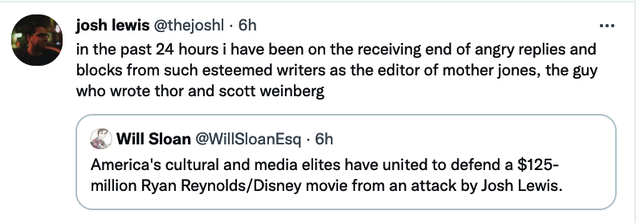
HE to friendo: “So out of the blue and several weeks after Free Guy opened, Lewis gets attacked by Twitter flapjacks for dissing it. I don’t get it. What’s the big thing?”
Friendo to HE: “Yeah, I know, right? But the thousands of replies and quote retweets are really showing how horrible the state of affairs is with America being Marvel-ified, and these critics and screenwriters are trying to defend a movie so…okay, decent but calm down. It’s hilarious but also flat out insane. Have we really stooped this low? Are things so bad that a Ryan Reynolds film is the bastion of hope for moviegoers?”
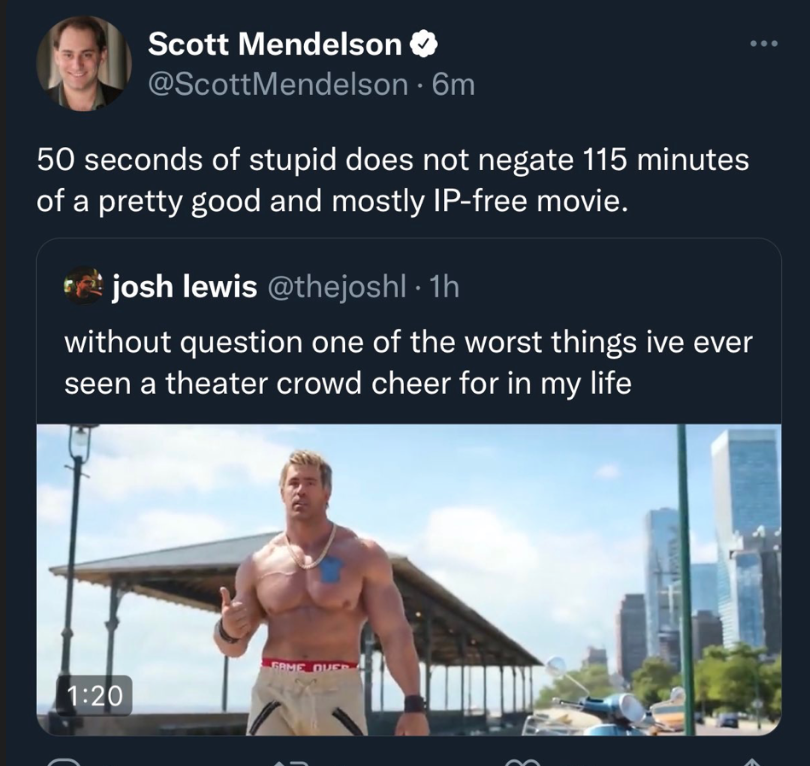
“Pay The Man Again, Fats”
Yesterday Robert Rossen‘s The Hustler celebrated its 60th anniversary. It opened on 9.25.61.
All the principals except Piper Laurie are long dead — director Robert Rossen, costars Paul Newman, Jackie Gleason, George C. Scott, Myron McCormick, Michael Constantine, dp Eugene Shuftan, editor Dede Allen — and it’s still a thing of ripe beauty in many respects.
And yet for decades I’ve felt irked by the script’s nagging moral undertow, voiced by Laurie’s Sara character. In an Act Two scene (a picnic), Sara marvels at Eddie Felson’s gift for pool-shooting (“Some men never feel like that”), and yet she berates him for playing for money. What’s Eddie supposed to do, become a bus driver or short-order cook and play for free on weekends?
And I’ve always been irritated by the grim expressions of McCormick’s Charlie. Once Felson starts playing Minnesota Fats in the temple of Ames Billiards, Charlie seems intimidated and bummed out by the stakes, the vibe…by everything. Shuftan’s elegant cinematography tells you what a joy the game can be, but Sara and Charlie do nothing but groan and lament. They’re a drag to be around.
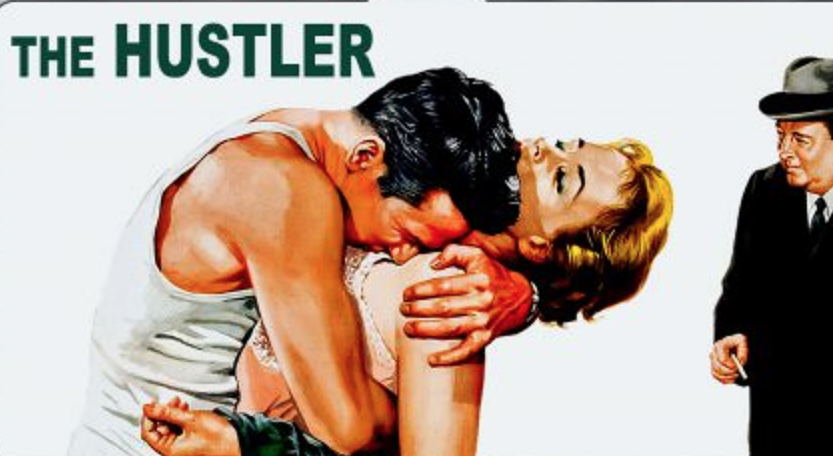
Hollywood’s Greatest Misanthropes
So which directors besides Stanley Kubrick have carved a reputation for having a low opinion of human beings? Kubrick has long seemed the king of this sardonic attitude, but who are his competitors? Or is Stan the only game in town in this regard? I really haven’t given it much thought.
Posted on 8.25.07: Charles Mudede, a dispenser of tight, clean sentences and un-minced thoughts, has written a short unambiguous piece for The Stranger, “Seattle’s only newspaper,” about what a misanthropic hard-case Stanley Kubrick was.
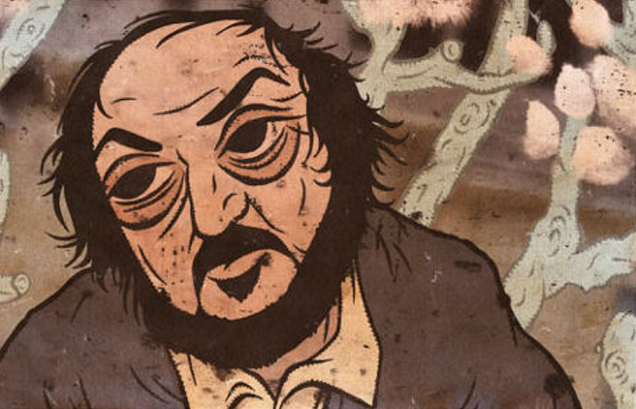
“Kubrick hated humans,” Mudede begins. “This hate for his own kind is the ground upon which his cinema stands. As is made apparent by 2001: A Space Odyssey, his contempt was deep.
“It went from the elegant surface of our space-faring civilization down, down, down to the bottom of our natures, the muck and mud of our animal instincts, our ape bodies, our hair, guts, hunger, and grunts. No matter how far we go into the future, into space, toward the stars, we will never break with our first and violent world. Even the robots we create, our marvelous machines, are limited (and undone) by our human emotions, pressures, primitive drives. For Kubrick, we have never been modern.
“‘I’m in a world of shit,’ says Private Joker at the end of Kubrick’s unremittingly dark Vietnam War film, Full Metal Jacket. That is what Kubrick has to say about the state of everything: The world is shit, humans are shit in shit, life is worth shit, and there is nothing else that can be done about the situation.
“In Kubrick’s movies, progress, sustained enlightenment, and moral improvement are impossible because the powers of reason, love, and religion are much weaker than the forces of generation and degeneration, desire and destruction, sex and death.”


